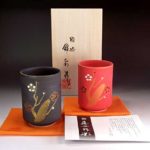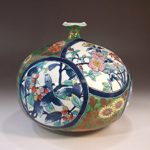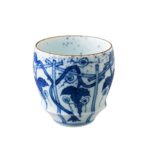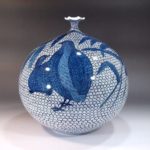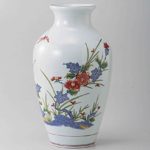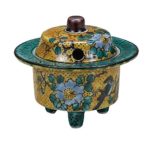Table of Contents
Traditional but not old-fashioned ceramic or cast iron teapot kyusu
The culture of Japan also has continued to change day by day. Meanwhile, the unchanged traditional crafts became to receive the reputation of “out‐of‐date” in the country.
The people overseas firstly had found much of interest in but the East ethnic products gradually lost the attraction for them.
They, however, never lost the functional beauty. It’s just fell behind the times on the designability.
In these days, the traditional craftsmen and makers begin to improve their product’s design for the buyers at the present time. Some companies co-operate with the commercial designers.
The products I introduce from now on have the both of the good points of the old and modern Japanese culture. I hope you will find your favorite stylish kyusu from them!
Modern style kyusu from the five traditional crafts
Ceramic (pottery and porcelain) kyusu
Tokoname ware
Tokoname ware is the traditional craft of Aichi Prefecture. The share of the kyusu is the largest in Japan. The smooth surface and various shapes are the features of the pottery.
1
Japanese Teapot Tokoname Kyusu / craftsman: Syoryu / Tou-ami / 350 ml (11.8 fl oz)
It has a shape almost like a traditional Tokoname kyusu. But the handle, the spout, the grip of the cover, and the mud black with the marbled brown are really elegant.
2
Japanese ceramic Tokoname ware. Kyusu teapot. 280cc
You can hardly find the kyusu which has a stripe pattern even in Japan. And the trapezoid form is also unique. It doesn’t have smooth surface unlike a classic Tokoname ware Kyusu.
View also…
Tokoname high-quality black kyusu (Japanese teapot)
Kutani ware
Ishikawa Prefecture, the producing area of Kutani ware, flourished as a prosperous cultural region. The crafts of Ishikawa are rich in many colors including gold. But it never loses elegance.
3
Kutani Yaki(ware) Japanese Teapot Shippou (with tea strainer)
The Shippou is one of the classic patterns in Kutani ware. But it doesn’t look old-fashioned yet. The gold is one of the features of Kutani ware.
4
Kutani pottery teapot pot mountain range (with tea strainer)
The kyusu has also one of the traditional Kutani-yaki colors. Though the pattern expresses the old Japanese landscape, we can feel the polished Kaga Domain Culture.
View also…
Dot and flower pattern Kutani ware Japanese teapots kyusu
Imari (Arita) ware
Imari-yaki/Arita-yaki is the first production of the porcelain in Japan. The traditional crafts of Arita area, Saga Prefecture. Though the products seem fragile, it has an excellent strength of the material. The potters stone contained much feldspar produces a fine-grained surface.
5
Arita yaki CtoC JAPAN Tea pot Porcelain Size(cm):14.3x10x10 ca232966
Not to mention a light touch pattern and color, but its shape is particularly noticeable. This teapot has a neat body and the position of the knob of the lid is different from ordinary one, it is on the back side. At first glance we can not see it as a Japanese kyusu.
6
Arita-yaki Kyusu teapot – Quenching – 300cc/ml – daiwan ami stainless steel net –
Most of Imari porcelains have the bright colors or Asian paintings with a blue
. But the Japanese teapot’s color is basically black. Furthermore, its shape is also different from a traditional Imari teapot. The uneven or wave surface shows the modern Imari feature.
⇒The tea set of Imari (Arita) ware
Mino ware
About 60% of the tableware in Japan is Mino ware. That’s how much the ceramic pervades their daily life. Mino ware is the specialty of Gifu Prefecture. Since there are many shapes, colors, and materials, it is said that “the feature is no feature”.
7
Japanese Mino Ware Zoho-Gama Kannyu pink teapot
All the more Mino wares are highly diverse, it can create such an airy-fairy kyusu. Pink color would make your table lighter. The tessellated pattern (pottery craze) is also effective.
8
Mino ware Scandinavian blue Tea pot
The simple-looking and stylish kyusu would be suitable even for the Western tableware. The dark blue with a frustum form is not traditional in a good sense.
Nambu Tekki
Though the Nambu Tekki products cover a variety of kitchen goods, the origin of the cast iron ware is the Japanese tea ceremony. Today, we can choose the modern style teapot from them.
9
Japanese iron tea pot “Nambu-Tekki” Silver
The metallic appearance knocks down an image of the old Japanese teapot. The silver color and square shape represent the modern Nambu Tekki products.
10
Iwachu Japanese Iron Teapot/Tetsubin, Azure Dragonfly
The Nambu Tekki maker Iwachu created the colorful cast iron teapot and changed the people’s thought that Nambu Tekki has just a black. Furthermore, they produce the smart flat type teapots.
View more…
Why don’t you also check the modern design of “Edo-kiriko” cut glass tumblers?
10 modern pattern Edo-kiriko glass tumblers







![TOKYO MATCHA SELECTION - Arita-yaki Kyusu teapot - Quenching - 300cc/ml - daiwan ami stainless steel net - [Standard ship by SAL: NO Tracking number & Insurance]](https://images-na.ssl-images-amazon.com/images/I/31JTFSJceXL.jpg)




